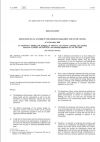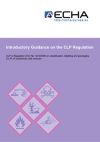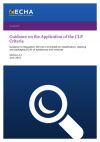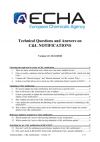Globally Harmonised System for the Classification and Labelling of Chemicals (GHS)
The Globally Harmonised System for the Classification and Labelling of Chemicals (GHS) was developed by the United Nations, and is a set of guidelines for ensuring the safe production, transport, handling, use and disposal of hazardous materials. It is a system, not a global law or regulation. Adopting countries use the building-block approach, meaning that they can pick and choose the parts of the regulation they wish to incorporate into their own national legislation. No country is obligated to adopt all or indeed any part of GHS. Each adopting country is solely responsible for GHS enforcement within its geographic jurisdiction.
European Union:
GHS in EU member countries is legislated in the EU Classification, Labelling and Packaging Regulation (CLP) which entered into force in January 2009 . The Regulations and guidance on implementation are downloadable below, and the Eurometaux Metals Gateway is a useful metals industry source of information on this topic.
Annex VI of the EU CLP Regulation lists the existing EU-wide harmonized hazard classifications for substances. This Annex is periodically updated by the EU Commission, and the updates are known as Adaptations to Technical Progress (ATP). As at January 2014 there are 5 ATP’s available, all downloadable from the EU Commission Enterprise and Industry webpage. The 1st ATP, August 2009, is worth a specific mention as its page 12 contains the listing and details of the EU harmonized hazard classification for molybdenum trioxide (CAS 1313-27-5, EC 215-204-7):
Hazard classification & category code:
Carcinogen GHS Category. 2; Eye Irrit.2; STOT SE3
Hazard Statements:
H351 = suspected of causing cancer via inhalation,
H319 = causes serious eye irritation
H335 = may cause respiratory irritation
United States of America:
The USA officially adopted GHS in March 2012. The US Occupational Health and Safety Administration (OSHA) adopted it by means of a revision of the Hazard Communication Standard to align with the GHS. OSHA calls this revision, HazCom 2012.
World-wide:
By the end of 2013 GHS had been adopted by 67 countries, and UNECE tracks its progress with per country information.
Classification, Labelling and Packaging Regulation (CLP)
Introductory Guidance on the CLP Regulation
Guidance on the Application of the CLP Criteria - Version 4.1 June 2015
How to create and submit a C&L notification using the REACH-IT online tool
ECHA CLP-Notification FAQ, Nov 2010
Guidance on Hazard Classification of Ores & Concentrates for EU CLP






